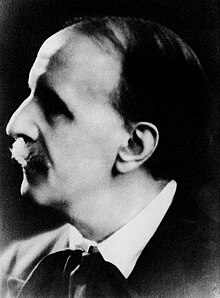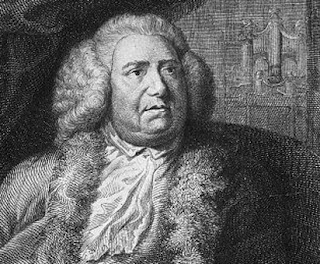10:15 Service in the Nave
Vocal Music
- Seek to Serve – Lloyd Pfautsch (1921-2003)
Instrumental Music
- Four settings of If thou but trust in God to guide thee, BWV 642, 647, 691, 690 – J. S. Bach (1685-1750)
Congregational Music (all hymns from the Hymnal 1982 with the exception of those marked “R” which are from Renew.)
- Hymn 440 - Blessed Jesus, at thy word (LIEBSTER JESU)
- Hymn 635 - If thou but trust in God to guide thee (WER NUR DEN LIEBEN GOTT)
- Hymn 7 - Christ, whose glory fills the skies (RATISBON)
- Hymn 609 - Where cross the crowded ways of life (GARDINER)
- Hymn R291 - Go forth for God, go to the world in peace (GENEVA 124)
- Psalm 19:7-14 - Tone VIIIa
5PM Service for St. Michael and All Angels
Vocal Music
- Command Thine Angel That He Come – Dietrich Buxtehude (1637-1707)
- Missa Oecumenica – Richard Proulx (1937-2010)
Instrumental Music
- Minuets No. 1 and 3 – Johann Sebastian Bach (1685-1750), Angelica Rodriguez, cello
- The King of Love My Shepherd Is – Daniel Burton, arr.(b. 1944), Daniel Boyd, cello
- Praise to the Lord, the Almighty – Johann Gottfried Walther (1684-1748)
Congregational Music (all hymns from the Hymnal 1982 with the exception of those marked “R” which are from Renew.)
- Hymn 460 - Alleluia! Sing to Jesus (HYFRYDOL)
- Hymn R114 - Bless the Lord, my soul (Jacques Berthier)
- Hymn 282 - Christ, the fair glory of the holy angels (CAELITES PLAUDANT)
- Hymn 618 - Ye watchers and ye holy ones (LASST UNS ERFREUEN)
- Hymn 324 - Let all mortal flesh keep silence (PICARDY)
- Hymn 625 - Ye holy angels bright (DARWALL’S 148TH)
 The composer of this morning's anthem is 20th Century composer, choral director, and teacher Lloyd Pfautsch, who was one of my professors at Southern Methodist University in Texas.
The composer of this morning's anthem is 20th Century composer, choral director, and teacher Lloyd Pfautsch, who was one of my professors at Southern Methodist University in Texas.Born in a little Missouri town where the primary industry was the manufacture of corncob pipes, Pfautsch was raised within the rich cultural, musical and hymnic tradition of German Evangelical churches which then extended from Pennsylvania across the mid and upper Midwest. His worship-song roots were the Lutheran-style chorale, and he often reminded his students and colleagues that music is a living voice of the Gospel, a gift from God never to be trivialized.
When teaching aspiring vocal professionals, Pfautsch challenged the frequent assumption that one's solo voice could be damaged by singing in choirs, proving that solo and choral singing need never be incompatible. And to his students studying choral conducting he often said: “Your choirs can sing anything you can teach them.” (We'll test this theory Sunday night.)
If you want to read some beautiful and inspiring memories of this man, check this out.
The melody (if you will) for the anthem comes from chant, the Missa Simplex. These are the words taken from Scripture which Lloyd Pfautsch used for this anthem:
May I live in the world as one who always seeks to serve.
May I live as one who knows the love of God.
Lord, teach me how to live and how serve.
With my ears may I hear. With my eyes may I see.All the organ music for 10:15 is based on one hymn, and all arranged by J. S. Bach. If Thou But Trust in God to Guide Thee is set to the tune WER NUR DEN LIEBEN GOTT. Published in 1657, Bach also used the tune in no less than EIGHT of his cantatas. Many other composers have also written organ preludes on this tune. WER NUR DEN LIEBEN GOTT is in a bar form (AAB). It is a great hymn, and one that deserves to be sung more by our congregation. (If for no other reason than it has just TWO stanzas!)
With my lips may I speak. May your word be heard through me.
Thus as I live each day may love sustain the will to serve. Amen.
© 1983, Agape, a division of Hope Publishing Company
Here is the story of this hymn, from the website Hymnary.com
When Georg Neumark was 18 years old, he was traveling across Germany to school when he was robbed of all his personal possessions and money. He spent the next two years looking for work amidst the economic hardships of the Thirty Years War. Finally, at the age of 20, he found employment as a tutor for a judge in Kiel. He was apparently so relieved and grateful that later that night he wrote this text of trust and gratitude, saying, “This good fortune, which came so suddenly and, as it were, from heaven, so rejoiced my heart that I wrote my hymn ‘Wer nur...’ to the glory of my God on that first day.”At the evening service for the feast of St. Michael and All Angels, the choir will sing Befiehl dem Engel, dass er komm (Command Thine Angel that He Come), a short cantata by Dietrich Buxtehude
Neumark knew of the trials we face every day – whether they are economic, emotional, spiritual, or physical. And he knew that, even if it is not how we would have first asked or imagined, God provides for His people. During those two years of living in the unknown, Neumark knew one thing: God was always with him. Later in his life he again lost all his possessions to a fire, but he had these words of trust to say in the face of adversity. And in the face of our own hardships, we sing these words of trust, knowing that God is with us.
which is perfect for this feast of All Angels.
In this cantata Buxtehude sets the sixth and seventh verses of the chorale "Christe, du bist der helle Tag", by Erasmus Alberus. As in many of his other cantatas, Buxtehude places the melody of the chorale in the soprano, though he ornaments the melody of the chorale a bit more than in many of his other works.
The mass setting is from the late Richard Proulx, called Missa Oecumenica in Byzantine Style.
This masterful setting beautifully weaves elements of chant from Eastern Orthodox Christianity with music of Alexander Arkhangelsky and Nikolai Rimsky-Korsakov.



